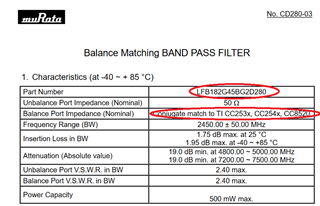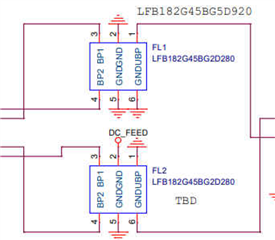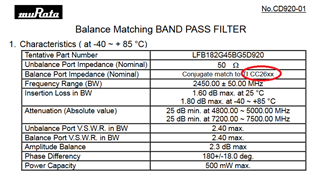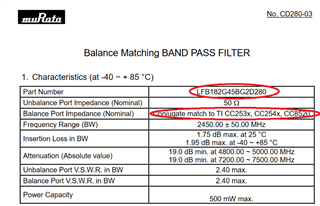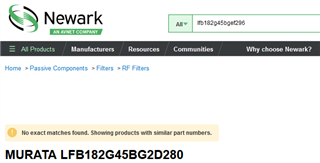Other Parts Discussed in Thread: TEST2, CC1352P, CC2652P, CC8520
Hello TI Team,
I am currently testing a prototype series of custom CC2652P7 boards with SmartRF Studio 7.
The board is correctly identified as CC2652P7_BLE-Device and seems to communicate correctly with SmartRF Studio.
I am using a LP-CC1352P7-4 board also connected to SmartRF Studio alternately in Continuous RX and TX mode to verify the corresponding operation of the custom CC2652P7 board.
Test1:
Continuous RX on CC2652P7, Continuous 5dBm TX on LP-CC1352P7-4
7.5mA supply current on CC2652P7, very poor RX RSSI -80dBm on CC2652P7
Test2:
Continuous TX on CC2652P7 5dBm, Continuous RX on LP-CC1352P7-4
10mA supply current on CC2652P7, normal RX RSSI -100 --> -40dBm on LP-CC1352P7-4 (almost no signal)
Test3:
Continuous TX on CC2652P7 10dBm, Continuous RX on LP-CC1352P7-4
8.9mA supply current on CC2652P7 (should be 19.5mA), RX RSSI -100 --> -95dBm on LP-CC1352P7-4
Test4:
Continuous TX on CC2652P7 20dBm, Continuous RX on LP-CC1352P7-4
13.4mA supply current on CC2652P7 (should be >50mA), RX RSSI -100 --> -90dBm on LP-CC1352P7-4 (almost no signal)
The RF network on the CC2652P7 is built according to "TI Application Note 2.4-GHz, 10-dBm PA IPC for CC26x2P and CC1352P" with 2 Murata IPCs LFB182G45BG2D280 followed by a RF switch SKY13587-378LF.
During the test a payed particular attention to the correct setting of the RF switch when in RX, PA, and non PA mode.
Remark: on our custom board the 32kHz Crystal oscillator is not implemented (pin8,9 not connected).
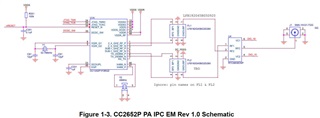
From the behavior above in particular the unusual low supply current in 10/20dBm PA transmit mode could you eventually guess the origin of my problems?
All prototyping boards show exactly the same behavior so seems to be a systematic hardware error or configuration of the CC2652P7 by SmartRF Studio is not done properly.
Appreciating your help
Best regards
Christoph




